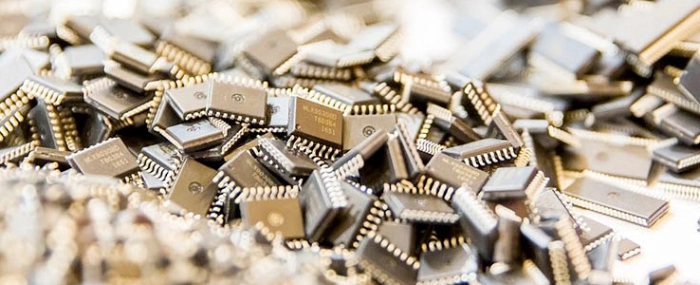
Is the semiconductor shortage over?
Although there are still sporadic shortages of specific components, the curtain has officially fallen on a two-year wave of shortages in general, and brands have gradually suspended stocking in response to changes in market conditions.
According to TrendForce research, due to steady weakening of overall demand for consumer electronics, inventory pressure has increased among downstream distributors and brands.
However, stable demand for automotive and industrial equipment is key to supporting the ongoing growth of foundry output value. At the same time, since the creation of a marginal amount of new capacity in 2Q22 led to growth in wafer shipments and a price hike for certain wafers, this drove output value among top ten foundries to reach USD 33.20 billion in 2Q22. Quarterly growth fell to 3.9% on a weakening consumer market.
A prelude to inventory correction was officially revealed in 3Q22. In addition to intensifying severity in the initial wave of order slashing for LDDI/TDDI, and TV SoC, diminishing order volume also extended to non-Apple smartphone APs and peripheral IC PMIC, CIS, and consumer electronics PMICs, and mid-to-low-end MCUs, posing a challenge for foundry capacity utilisation. However, the launch of the new iPhone in 3Q22 is expected to prop up a certain amount of stocking momentum for the sluggish market. Therefore, Trendforce expects that top ten foundry revenue in 3Q22 will maintain a growth trend driven by high-priced processes and quarterly growth rate is expected to be slightly higher than in 2Q22.
With the tide of inventory correction approaching, foundries are furiously migrating production capacity to sectors with more stable demand – such as automotive and industrial equipment.
As TrendForce points out, TSMC posted 2Q22 revenue of USD 18.15 billion –benefiting from strong demand for HPC, IoT, and automotive stocking activities. However, quarterly growth rate contracted to 3.5% due to wafer markups inflating the 1Q22 revenue base period.
As Nvidia, AMD, Bitmain, and other HPC customers continue to ramp up their new products for more advanced nodes, TSMC's 5/4nm revenue increased by approximately 11.1% QoQ, securing this node as the best revenue performance in 2Q22. Although the 7/6nm market was uncertain given murky mid/low-end smartphones market conditions and client order revisions, the node maintained a backstop in the form of mainstream products originating from HPC customers. TSMC's revenue generated by this node increased by 2.8% QoQ.
Samsung's 7/6nm production capacity has been gradually migrating to the 5/4nm process and yield rate has continued to improve, driving 2Q22 revenue to USD 5.59 billion, a quarterly increase of 4.9%. At the same time, the first 3GAE process using GAA architecture was officially mass-produced at the end of 2Q22. TrendForce states that the first wave of customers includes PanSemi, a Chinese cryptocurrency mining company. However, due to the complex 3nm production process, production will require two quarters. Therefore, the 3nm node is not expected to contribute to revenue until the end of 2022, at the earliest.
UMC's new 28/22nm production capacity went online smoothly in 2Q22, driving the growth of overall wafer shipments and ASP. This node's revenue share moved up to 22% this quarter while 2Q22 revenue reached USD 2.45 billion, growing 8.1% QoQ, and the highest in the top ten.
GlobalFoundries benefited from the release of a small amount of new production capacity and long-term agreement guarantees for most of its production capacity. Revenue in 2Q22 reached USD 1.99 billion, a quarterly increase of 2.7%.
It is worth noting, assisted by the recent U.S. CHIPS Act, that Qualcomm signed a new contract with GlobalFoundries to extend their long-term agreement period to 2028 with a significant increase in agreed volume, mainly producing 5G RF transceivers and Wi-Fi7 in Malta Fab8 at the 14/12nm node, aimed at supporting the localised production of wafers in the US.
SMIC's 2Q22 revenue reached USD 1.90 billion, up 3.3% QoQ, while its proportion of revenue in the smartphone sector fell to 25.4%. The smart home sector maintains strong growth momentum and revenue from related application products such as Wi-Fi, Bluetooth, PMIC, and MCU peripheral IC for networking and smart control devices increased by approximately 23.4% QoQ.
| Ranking | Company | Revenue | Market share | |||
| 2Q22 | 1Q22 | QoQ | 2Q22 | 1Q22 | ||
| 1 | TSMC | 18,145 | 17,529 | 3.5% | 53.4% | 53.6% |
| 2 | Samsung | 5,588 | 5,328 | 4.9% | 16.5% | 16.3% |
| 3 | UMC | 2,448 | 2,264 | 8.1% | 7.2% | 6.9% |
| 4 | GlobalFoundries | 1,993 | 1,940 | 2.7% | 5.9% | 5.9% |
| 5 | SMIC | 1,903 | 1,842 | 3.3% | 5.6% | 5.6% |
| 6 | HuaHong Group | 1,056 | 1,044 | 1.1% | 3.1% | 3.2% |
| 7 | PSMC | 656 | 665 | -1.4% | 1.9% | 1.0% |
| 8 | VIS | 520 | 482 | 7.9% | 1.5% | 1.5% |
| 9 | Nexchip | 463 | 443 | 4.5% | 1.4% | 1.4% |
| 10 | Tower | 426 | 421 | 1.2% | 1.3% | 1.3% |
| Total top 10 | 33,197 | 31,957 | 3.9% | 98% | 98% | |
For more information visit TrendForce



